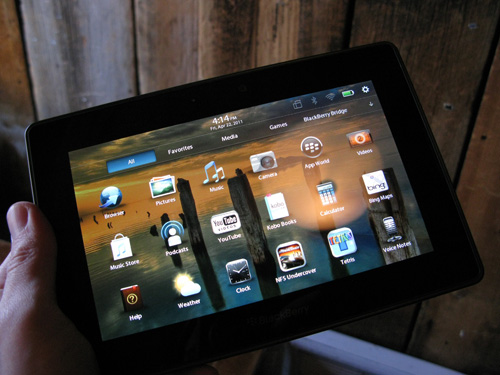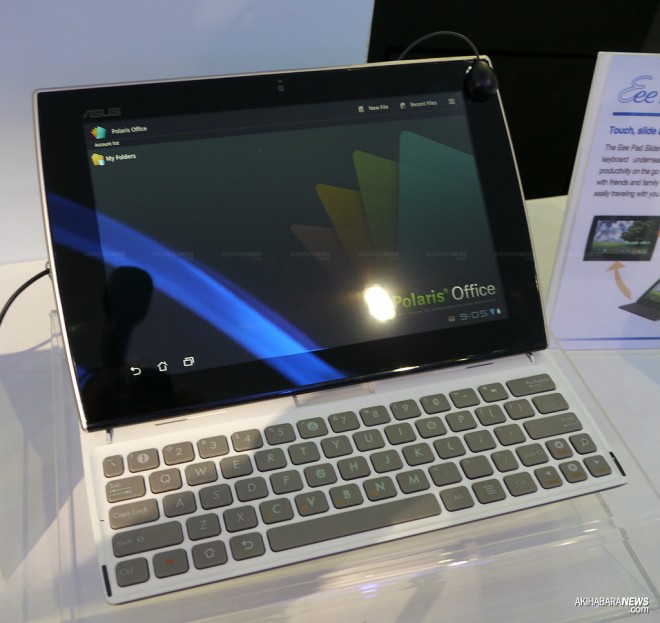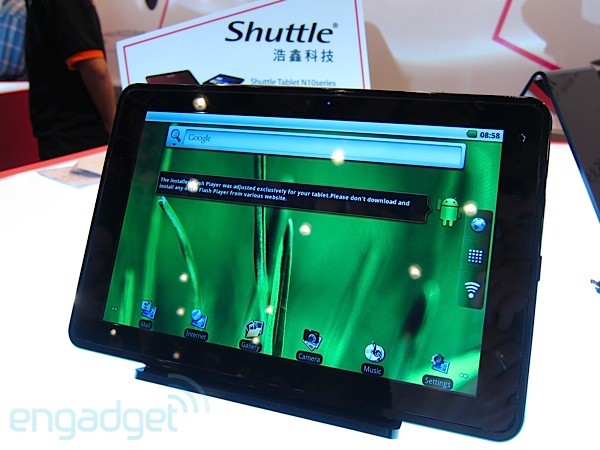INTERVIEW: Personal Mobile Devices boss gives more details


Google is very excited by the Asus Padfone; the company's corporate VP and GM for the Personal Mobile Devices Business Unit, Benson Lin, has told Pocket-lint in an exclusive interview at Computex in Taipei.
“We are working very closely with Google and they are excited by the PadFone,” Lin tells us with excitement.
The Asus PadFone, launched at the start of Computex 2011, takes the concept first debuted by Israeli firm Modu whereby the smartphone acts as the central computing unit for a tablet jacket.
In the case of the Asus PadFone, there are two parts: a 4.3-inch Android powered smartphone and a 10.1-inch tablet, which can be used to expand the screen size when it comes to watching movies.
There’s no surprise that Google is excited. It recently bought Modu’s patents after the company went broke earlier this year, suggesting that Asus might be using those newly bought permissions to create devices like the PadFone.
Due out at Christmas, Lin tells us, the biggest problem, and therefore delay, is that it’s waiting for Google to release its Ice Cream Sandwich?version of Android as it holds the key to the seamless switching between the phone and tablet modes.
Google has ICS confirmed before Christmas, bringing a closer unity between its phone operating system (currently Android 2.3.3) and its tablet operating system (currently Android 3.1).
But it’s not just Google who wants the PadFone, Lin explains.
“Some of the major reasons behind the PadFone is that Asus has found that many consumers are unhappy with the fact that if they own a tablet and a smartphone, they end up having to subscribe to a data plan for each of the devices for 3G access, which can be quite costly.”
Add that to tablets and smartphones having very different usage scenarios and Asus claims that consumers are three times as likely to access the Internet on a tablet as on a smartphone. There’s of course also a matter of cost, and the PadFone should be more affordable than buying both a tablet and a smartphone claims Lin.
Asus usage scenario for the phone part for the PadFone includes using it for making phone calls, sending text and multimedia messages, checking email, using it for instant messaging and listening to music on the go - so basically everything that you use a smartphone for really - while the tablet part fulfils the same wants: Internet access, video conferencing, entertainment, replying to emails and some productivity tasks.
If that all sounds exciting, Asus has hinted to us that this is just the start.
The PadFone is potentially just one device in a new echo system and it’s very possible that Asus will offer new handsets that will allow users to keep the tablet while upgrading the phone part, which of course contains all the important hardware.
Asus wouldn’t tell us much with regards to the hardware features, but suggested that it was the same as the latest “super phones” from HTC, Samsung et al.
As such Asus is intending to push the tablet part as the differentiator in the market.
The hope is not only to win over consumers to the PadFone, but also network operators, as Asus believes that consumers will use more data services with the PadFone due to the tablet part.
We should also be seeing other devices from Asus personal mobile devices group in the future as well Lin tells us, but not right now as Asus is focused on Android for smartphones.
That’s despite having had a past relationship with Microsoft, suggesting that Asus isn’t about to launch a Windows Phone 7 smartphone any time soon even though it made developer models for the company.
Bad news for MeeGo. Asus might have launched a MeeGo-powered laptop at the show, but Lin confirmed there is no plans to release a MeeGo tablets for now.
Tags:
Tablets Asus Google Ice Cream Sandwich Honeycomb Phones Features Interviews Computex2011 Asus Padfone







Asus: Google excited by the PadFone that's coming Christmas with Ice Cream Sandwich originally appeared on http://www.pocket-lint.com on Mon, 30 May 2011 19:58:00 +0100








































